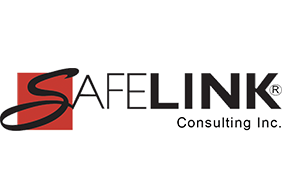The old idiom ignorance is bliss may be true in some circumstances, but not when it comes to ensuring the safety of your employees. Despite having strict safety policies in place at your organization, it is next to impossible to be prepared for every safety hazard that could arise on any given day. For example, take the seemingly endless COVID-19. No one was prepared for this deadly pandemic that wreaked havoc on the entire world, however, adapting to a “new normal” became necessary for people around the globe. Navigating protocols and adhering to guidelines around this virus became paramount so employers could reopen their organizations as safely as possible, which meant leaning heavily on state and federal agencies for guidance.
The Occupational Safety and Health Administration, better known as OSHA, was established in 1970 with a primary goal of ensuring the health and safety of American workers in the workplace. OSHA has specific safety and health requirements for specific safety and health hazards, and it is the responsibility of every employer to take reasonable precautions and measures to protect their employees. Having a specific safety standard for every potential hazard is next to impossible, however, that doesn’t mean employers are off the hook.
Richard Fairfax, former director of OSHA’s Directorate of Enforcement Programs said, “I don’t think it is possible to have a standard or regulation that will cover any and all hazards existing now or in the future, hence the General Duty Clause."
Authoritatively called Section 5(a)(1) of the Occupational Safety and Health Act, the General Duty Clause, is intended to give OSHA a means to address hazards that don’t have a specific health and safety requirement or Standard (AKA law). OSHA expects all employers to take reasonable measures to protect workplace exposure to illness, injury, and fatalities. Failing to do so can lead to fines, penalties, and other repercussions. The General Duty Clause works to fill the crevices in OSHA law for perceived unregulated risks.
Section 5 of the Occupational Safety and Health Act lists responsibilities or duties of employers and employees for occupational safety and health. OSH Act of 1970 - Sec. 5 Duties
Section 5(a)(1), or the General Duty Clause, requires employers to provide their workers with a safe and healthy workplace free from recognized hazards that are causing or likely to cause death or serious physical harm. Section 5(b) states that employees must comply with the rules, regulations, requirements, and orders put in place to keep them safe from the recognized hazard.
In a nutshell, everyone plays a part when it comes to safety.
Take COVID-19 as an example. Although, there isn’t a COIVD-19 specific Standard, OSHA has used the General Duty Clause to cite employers for not protecting their employees from COVID-19 health and safety hazards. For example, not installing plastic barriers or ensuring social distancing has led to OSHA General Duty Clause citations. More info can be found here: OSHA Covid-19 Related Inspections
It is the responsibility of the employer to recognize the hazard and implement reasonable safety precautions to prevent employee exposure. It is the responsibility of each employee to follow rules and regulations laid out by OSHA, as well as the safety guidelines put in place by their employer.
Once again, everyone plays a part when it comes to safety.
To issue a General Duty Clause citation the burden of proof lies with OSHA. They must prove the following:
1. There was a hazard and employees were exposed at the facility/organization in question.
2. The hazard was recognized.
3. The hazard causes or is likely to cause serious harm or death.
4. A feasible and useful method to correct the hazard was available.
First, OSHA must prove that the employees at the facility in question were exposed or affected by a hazard. In this (made-up) case, let’s assume there was a clear-cut hazard and employees were indeed exposed at the facility in question.
Next, OSHA must prove that the employer recognized the hazard and that the hazard could cause serious illness, injury, or harm. Again, let’s assume that both are yes. There was proof that the employer recognized the hazard, and it was likely to cause severe injury, illness or even death. So far, the answers to the first three questions are yes, yes, and yes.
On to the fourth burden of proof – was the hazard correctable? This is where things can get dicey.
In this (make believe) case, it was clear that employees were exposed to a recognized hazard that was life threatening. However, if all feasible safety measures were put into place and there was nothing more that could be done to correct the hazard, the employer may be covered.
Most citations aren’t as cut and dry as the make-believe example given above, so it is dire for employers to put reasonable safety precautions in place and keep good documentation of all safety policies and procedures.
Now more than ever it is critical for employers to keep OSHA standards a top priority, and to always be prepared for an OSHA inspection. Being prepared will save time and money, but most importantly it will ensure a safe working environment for your employees.
Could your business benefit from a safety assessment? Contact SafeLink to learn more.
Learn more about what SafeLink Consulting can do to help your business with compliance services, including patient safety and staff Dental OSHA Compliance, to meet OSHA training requirements, CDC guidelines, and quality system consulting to meet FDA compliance. SafeLink Consulting assists businesses with workplace safety training, infection control training, HIPAA training online, quality systems, assessments, audits, due diligence, and more.
Industries that SafeLink Consulting works with include:
Dentistry compliance - assisting the dental practice with meeting requirements for OSHA, HIPAA, EPA, and CDC guidelines, patient safety and employee health & safety
Dental Laboratory compliance - assisting the dental lab with meeting requirements for OSHA, FDA, and CDC guidelines, employee health & safety, plus FDA requirements for lab manufacturing custom implant abutment /GMP for medical device manufacturers
Medical Device Manufacturers compliance - assisting with meeting OSHA compliance & FDA requirements, GMP - good manufacturing practices
General Industry compliance - assisting with OSHA compliance and FDA compliance as it pertains to the specific business
Beverage Industry compliance - assisting beverage businesses such as the craft brewery, winery, cidery, distillery, vintner with meeting OSHA compliance, health & safety, FDA requirements / GMP - Good Manufacturing Practices.






Leave Comment